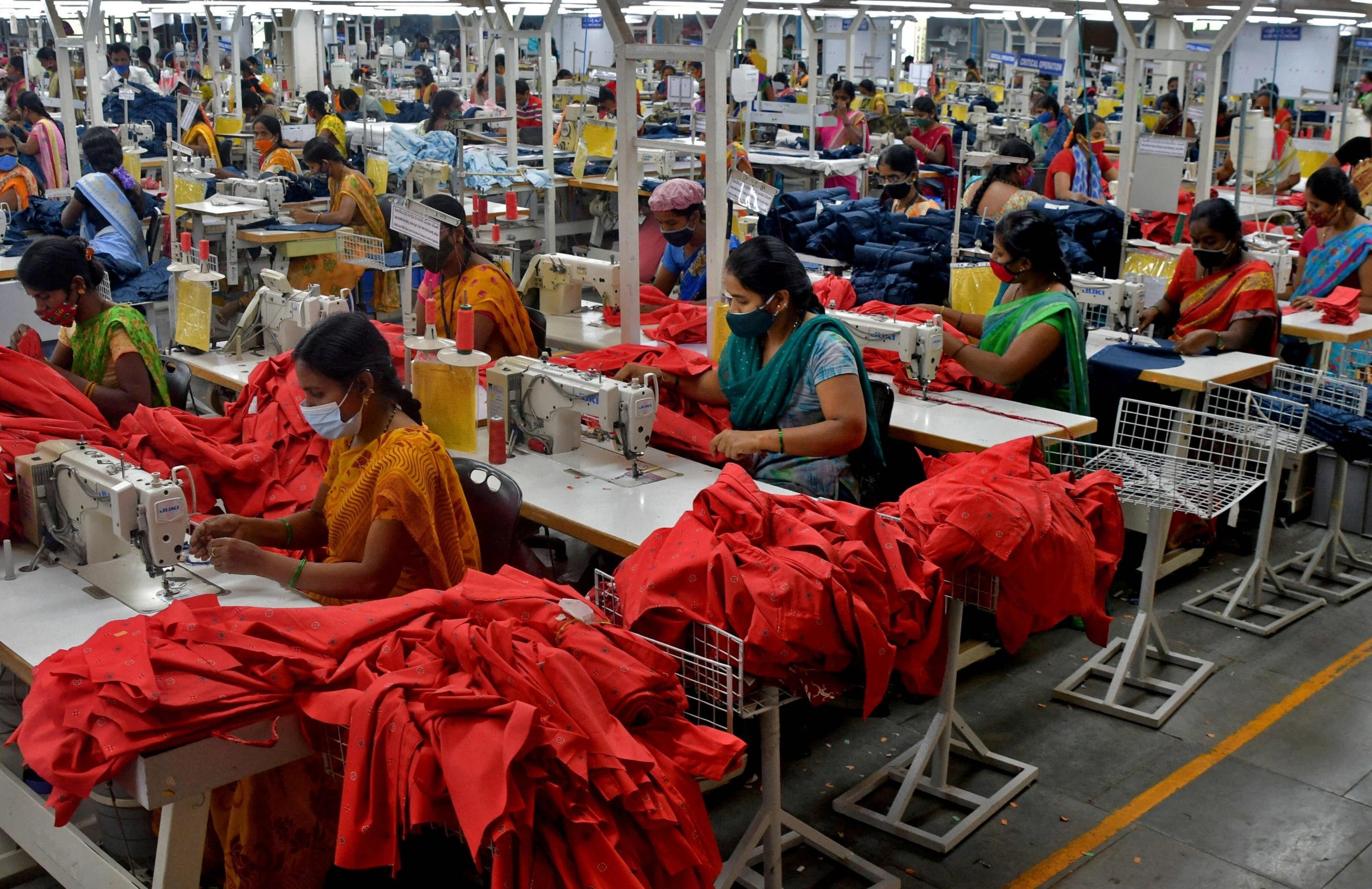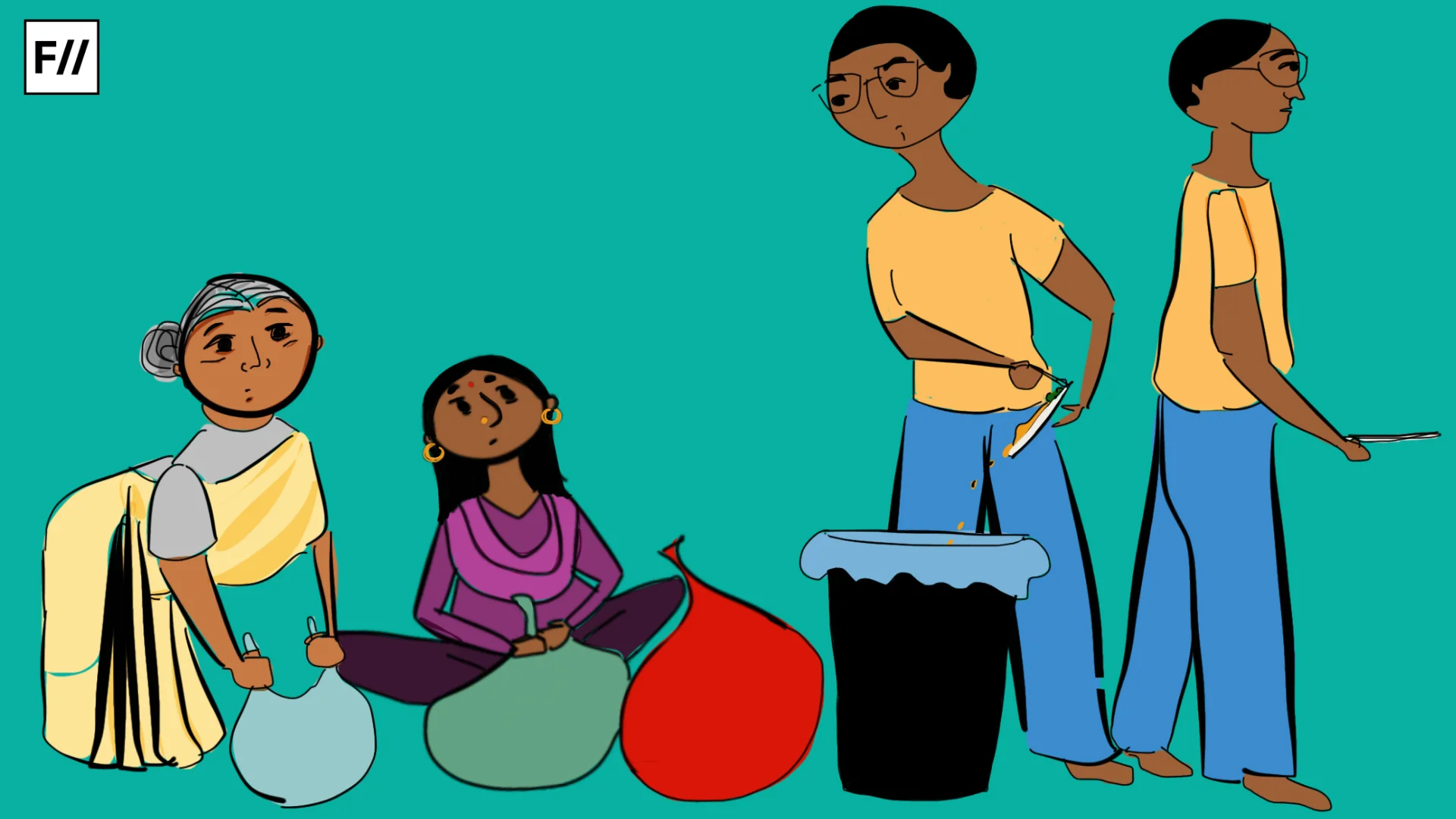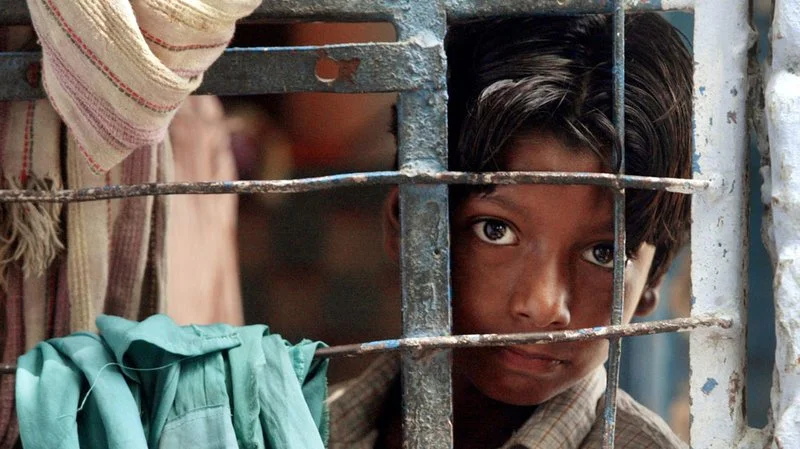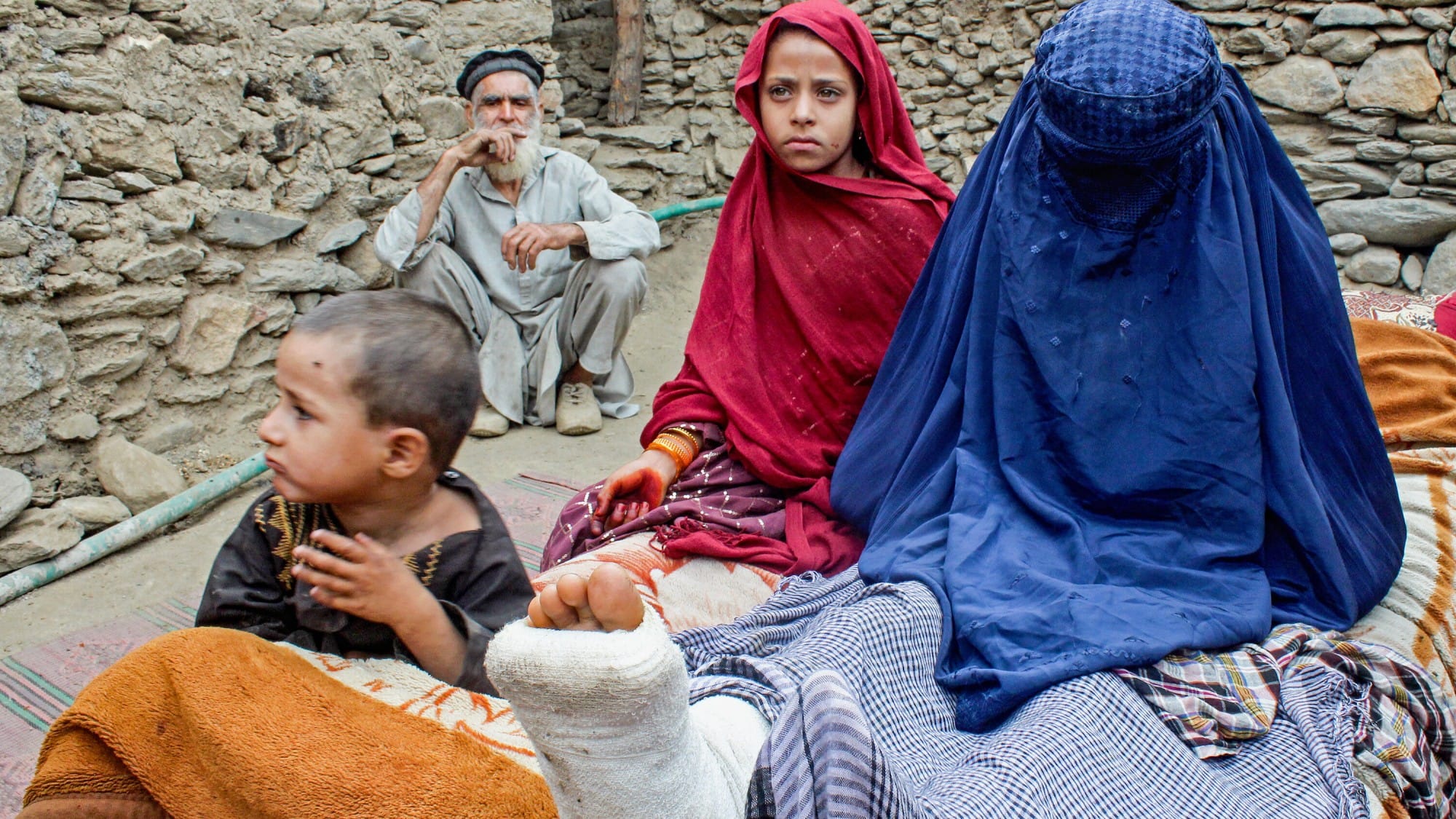On a humid morning in Tiruppur, Tamil Nadu’s garment capital, the sewing machines hum, but the atmosphere on the factory floor feels tense. Supervisors call fewer lines, and groups of women linger in the lunchroom, whispering about cut shifts and unpaid overtime. “We’re scared of losing our jobs. Many of us borrowed money to come here. If the factories cut workers, we will have nothing,” said Harihar Pradhan, a migrant stitching operator from Odisha. Her voice captures the fear that now hangs over millions of Indian workers in feminised export industries after the United States imposed punitive tariffs of up to 50% on Indian goods.
Harihar’s anxiety reflects the magnitude of the challenge. The tariffs, imposed by Donald Trump in his return to the White House, have been described as among the harshest India has ever faced. Economists warn that the US tariffs could shave 0.5 to 0.6 percentage points off India’s GDP this year. But the macro numbers obscure who exactly pays the price. Women dominate many of the very sectors Washington has targeted, textiles, leather, footwear, seafood, jewellery and electronics industries that together employ tens of millions. These jobs are rarely secure, often informal, and already pay among the lowest wages in India’s formal economy. The tariffs hit them at their weakest point.
According to the Global Trade Research Initiative, exports to the U.S. could shrink by 43%, from USD 86.5 billion to USD 49.6 billion in 2026. Sectors such as textiles, gems, auto parts, leather, agriculture and marine products, especially shrimp, will be hardest hit.
At least 30% of India’s exports to America come from industries that rely heavily on women workers, often in insecure, low-paid jobs. In 2024 alone, India shipped USD 23 billion worth of textiles, leather, marine products and electricals, all sectors where women form the bulk of the workforce.
Shrimp, diamonds and debt: Women on the edge
“I never even knew the meaning of the word tariff until my factory in Tiruppur started slowing down,” said Meena Kumari, a 34-year-old garment worker who stitches T-shirts for export.
“One day, the supervisor told us we would be put on rotation. That means we work only half the month. Suddenly, my salary dropped from around Rs 12,000 to just Rs 6,000. Every month I pay Rs 5,500 to a microfinance agency, so tell me, what will I have left for food, for school fees, for my daughter’s medicine?“
“We hear the Americans first put a 25% duty on our clothes and then added another 25% just a week later. What do I know of America or its politics? All I know is that because of these taxes, whole production lines have been shut down.”
“Women like me are told to sit at home without pay or are moved to other lines with fewer hours. And the first to be pushed out are the contract workers, like my neighbour Sita, who was hired on a piece rate. She has no PF, no ESI, nothing to fall back on. She was just told not to come from tomorrow.”
“How is it our fault that two governments are fighting? Why should we be the ones to pay the price with our stomachs and our children’s futures?“
Her story illustrates a broader trend. India’s textile and garment sector is the country’s single largest non-farm employer, supporting an estimated 45 million workers, of whom roughly 60 to 70% are women. Garment hubs like Tiruppur and Dindigul supply global fast-fashion chains that operate on wafer-thin margins. When buyers push suppliers to absorb higher costs or risk losing orders, those costs are passed down the line. For women like Saraswati, the “tariff” is not a diplomatic term; it is the shortfall in her pay envelope.
The seafood sector is heavily feminised. Studies estimate that women make up over 75% the workforce in processing plants, performing the most gruelling tasks in refrigerated halls for meagre wages.
The seafood industry tells a similar story, with an added cruelty. In Bhubaneswar, Sunita Behera, a 42-year-old worker at a shrimp processing unit, has spent more than a decade peeling and packing frozen prawns for export. Her earnings are the only steady income for her family after her husband lost his job during the pandemic. “If the factory closes, I don’t know how we will survive,” she said. “My daughter is preparing for her college entrance exams, and my son still needs school fees. Every rupee I bring home goes straight to them.”
The seafood sector is heavily feminised. Studies estimate that women make up over 75% the workforce in processing plants, performing the most gruelling tasks in refrigerated halls for meagre wages. India is the world’s largest exporter of frozen shrimp, and the U.S. is its biggest buyer. A 50% tariff instantly destabilises this chain. Factories cut shifts, farmers reduce production, and workers like Pramila, who have no savings and few alternatives, are left staring at debts.
Exporters describe what the tariffs look like on the ground. “Some factories have halted production altogether,” admitted V. Elangovan, a garment exporter in Tiruppur. “Orders are being cancelled or delayed because U.S. buyers don’t want to pay the higher price. That immediately translates into layoffs.” In Surat’s jewellery clusters, polishing units reported that American clients had pulled back. “We have already stopped expansion,” said a factory manager. “Now we are wondering if we can even keep the current workforce.” The tariff is felt not just as an abstract trade dispute, but as an order that suddenly doesn’t arrive, a line that doesn’t run, a shift that doesn’t get paid.
“When my hours are cut, the first thing to go is my daughter’s tuition fees. We can survive on rice for some days, but I don’t want her to stop studying.”
In Surat, where jewellery polishing units sparkle with the dust of diamonds, the picture is just as grim. Factories there employ thousands of women in finishing and polishing roles. After the tariffs, U.S. clients began delaying or slashing orders. “We have already stopped expansion,” one manager told Reuters. “Now we are wondering if we can even keep the current workforce.” For women who painstakingly polish gems for daily wages, the prospect of layoffs means returning to unpaid domestic work, erasing years of hard-won financial independence.
The crisis is not confined to factories. In Andhra Pradesh, shrimp farmers say exporters have slashed the rates they pay by nearly 20%, wiping out most profits. “We cannot continue like this,” said V. Srinivas, a farmer. For women in peeling sheds, the reduced rates translate into less work, fewer shifts, and even lower wages. These women often come from Dalit and tribal communities with little land of their own; their cash wages are the only buffer against poverty. Without them, households fall into the hands of moneylenders, starting cycles of debt that can last years.
The social consequences extend beyond economics. Reduced incomes force families to make impossible choices. In Tiruppur, one seamstress admitted: “When my hours are cut, the first thing to go is my daughter’s tuition fees. We can survive on rice for some days, but I don’t want her to stop studying.” Her words capture how tariffs, imposed in Washington, ripple into Indian kitchens and classrooms. They shape who gets an education, who eats three meals, and who sees a doctor. They decide whether women remain wage earners or slip back into dependence.
Policies that protect firms, not families
The Indian government has promised relief, announcing credit guarantees, loan moratoria, and talks with the Reserve Bank to ease financing for exporters. But these measures are firm-centric, not worker-centric. Without wage subsidies or direct cash transfers tied to employment, the women most affected see little immediate benefit. “Relief for exporters does not fill my rice pot,” Behera said bluntly. “If they help companies but we lose our jobs, what is the point?” Her question lays bare the gap in policy thinking: trade relief that ignores workers fails the very people who keep the export machine running.
Meanwhile, U.S. buyers are already shifting orders. Some are rerouting to Bangladesh or Vietnam, where tariffs remain lower. Others press Indian suppliers to absorb the costs, threatening cancellations if they refuse. Either way, the squeeze passes down the chain to the most precarious workers. The irony is that the women whose nimble fingers and long hours have made India competitive in global supply chains are the ones most easily discarded when those chains are strained.
The feminist argument is simple: trade wars are not fought in spreadsheets; they are fought in women’s lives. Tariffs reverberate through the least visible links in the supply chain.
The feminist argument is simple: trade wars are not fought in spreadsheets; they are fought in women’s lives. Tariffs reverberate through the least visible links in the supply chain: a shrimp peeler in Bhubaneswar, a seamstress in Dindigul, a polisher in Surat. They reinforce gendered inequalities by pushing women back into debt, out of school, or into unpaid domestic work. Recognising tariffs as a feminist issue means demanding that policy responses centre on these workers, not just on exporters and diplomats.
As Zainab Lone, a Delhi-based feminist labour activist, put it, “When women lose jobs in these sectors, it is not just an economic loss, it is a loss of dignity and autonomy. Trade policy must be seen as social policy, because its consequences are borne in kitchens, in classrooms, and in women’s bodies.”
About the author(s)
Masrat Nabi is a journalist whose work focuses on politics, gender, culture, and social issues in India.





